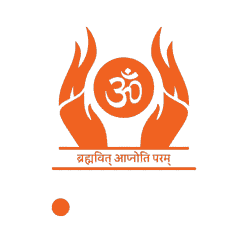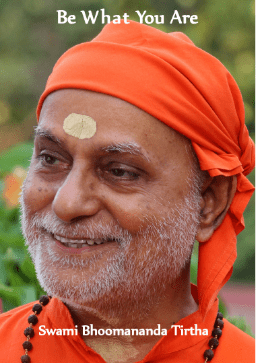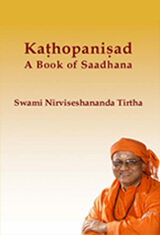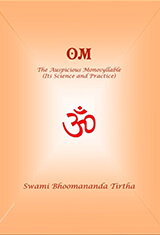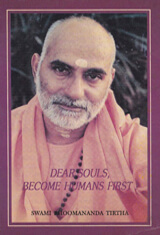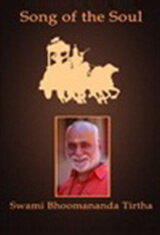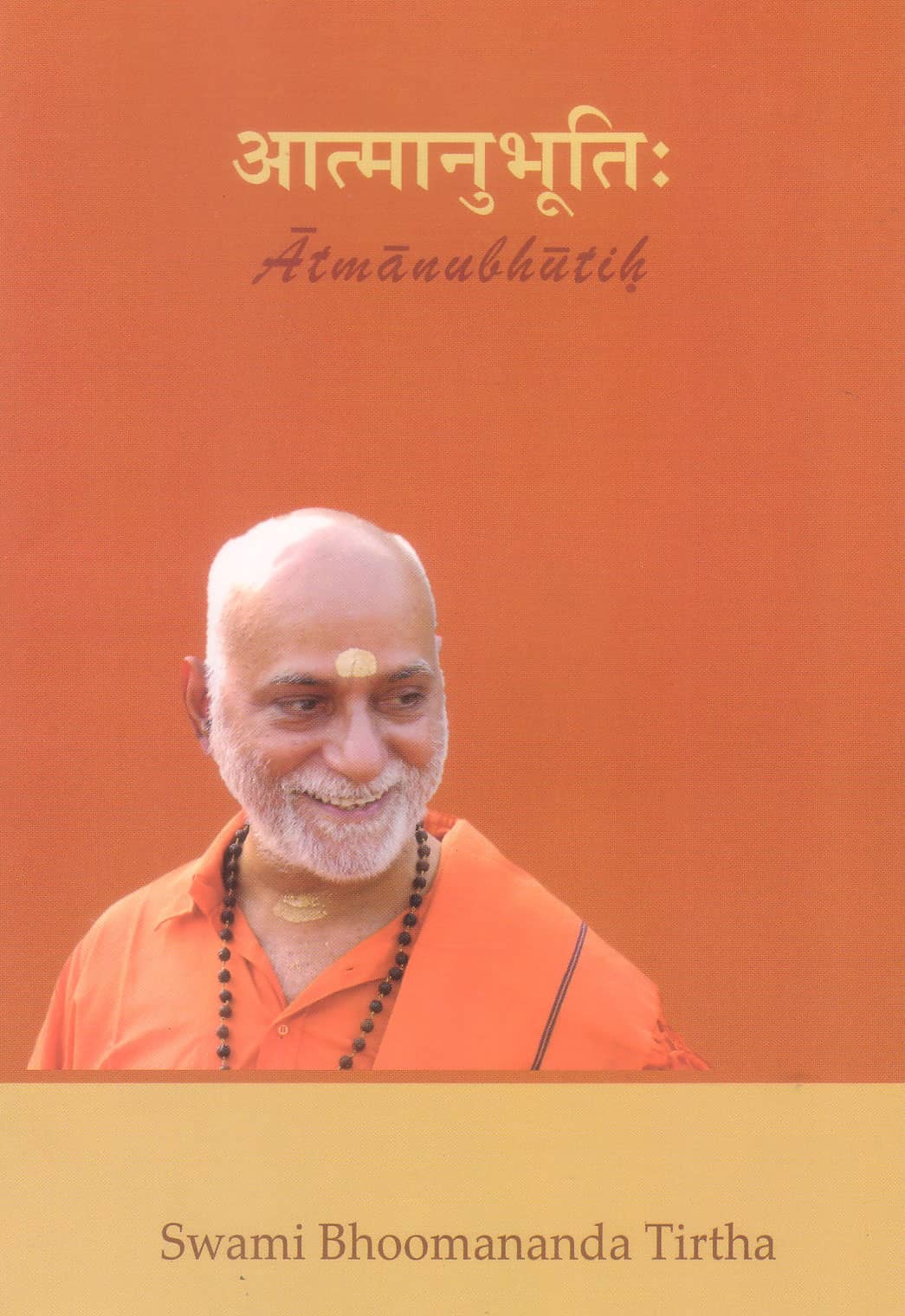Resources
What is Sannyaasa
Swami Bhoomananda Tirtha

And sannyaasaashrama is much more convenient and also compulsive in the matter of pursuing this saadhana of supreme freedom. It cannot be pursued normally remaining at home with profession etc.
Harih Om Tat Sat. Jai Guru.
Yesterday S had raised a doubt whether I recommend scriptural studies or not. We had a brief discussion on it. The other point discussed was, what is my stand on sannyaasa, and what is sannyaasa as presented in Bhagavad Gita. We did not discuss sannyaasa as dealt in the Upanishads.
Whenever we speak of sannyaasa, we generally mean it to be the fourth Aashrama in human life. The word Aashrama goes with Brahmacharya, Gaarhasthya and Vaanaprastha also. All are considered Aashramas: Brahmacaryaashrama, Gaarhasthyaashrama, Vaanaprasthaashrama and Sannyaasaashrama.
This Sannyaasaashrama which is generally indicated by the term sannyaasa means very clearly:
1. Keeping away from the blood and matrimonial relationships. It means, not to have any functional relationship either in the mind or in the bodily level with them.
2. Not having any profession or any kind of an income.
3. Not having any possession.
That is, abandoning or renouncing the usual ways of life, relationships and dependence. Then, being alone, what will a sannyaasin do thereafter? After all, sannyaasa is meant for attaining Moksha. So, the sannyaasin will pursue the saadhana meant for moksha.
What is that saadhana? Very clearly it is three-fold – Shravana, manana and nididhyaasana. Listen to the scriptures from the Wise Guru or Saints. Thereafter, reflect upon whatever is heard or studied. And then, once the ideas have become well crystallized and the intellect has become well resolved – vyavasāyātmikā buddhiḥ – sit in a place, contemplate upon the Truth, and realize the Truth. The third stage clearly means that one should remain physically still and try to attain oral, mental and intellectual stillness.
Finally, when the inner personality becomes still, all the object connections are lost and the Subject alone remains. So, one cannot but realize That. This is the saadhana for a sannyaasin.
Whenever we refer to sannyaasa, we refer to it as an aashrama, the fourth and the last, in which secular activities and secular relationships have no place. However, you will find that after taking up sannyaasa many people undertake social and other forms of welfare activities. The orthodox people who advocate sannyaasa will always denounce such activity. Other than shravana, manana and nididhyaasana, the only exercise a sannyaasin can take up is reading scriptures, writing commentaries on them or writing fresh books. These are the only things, a sannyaasin is supposed to do. All other forms of activity are considered secular.
Now the question is: Does Bhagavad Gita profess this kind of sannyaasa? This is what Arjuna wanted to take up. And he laid down his weapons saying that he would not fight. That is the time the Gita instructions commenced. In the process, Sri Krishna started discussing sannyaasa as an attainment.
Why are sannyaasins themselves pursuing sannyaasa-dharma? It is for an attainment. What is that attainment? It is characterized by the realization of the Self. When you realize the Self, you understand it as akartaa (non- doer) and abhoktaa (non-enjoyer or non-sufferer). The kartṛtva and bhoktṛtvā get dissolved in your mind. This dissolution does not come from just taking up sannyaasa! A sannyaasin may have this dissolution but it can equally be had by others too, provided they pursue the requisite saadhana. Because, it is the saadhana that brings this attainment. And what is the saadhana? Wisdom or jnaana is the saadhana. What kind of wisdom?
It is so many times mentioned in Bhagavad Gita in different chapters: naiva kiñcit karomīti yukto manyeta tattvavit. The tattvajnaani (Knower of Truth) will always have a feeling – “naiva kiñcit karomīti”, I do not do anything.” If I do not do anything, where is the question of my renouncing anything? So, is it renouncing the activities that is called for or the feeling of doership about activity? Sri Krishna makes it very clear that it is the dissolution of the doership, enjoyership and sufferership – the renunciation of the kartṛ bhoktṛ bhaava.
How will you be able to abandon it? The renunciation is to be attained in the mind. By understanding that one is the Self, the Self is all-pervading and as such it does not move. If it does not move, then where is the question of any activity in the Self? Is not the space niścalā? The Self is more niścalā. So you contemplate upon the Self in its own manner and thereafter as a result of the contemplation, you realize it, have your identity and focus in it. When this becomes true, automatically all doership and enjoyership will disappear.
Sri Krishna further emphasizes (3.5 &6) that none can renounce activity even for an instant, because prakṛti through its guṇās makes everyone active. Then, is there no place for sannyaasa at all? Yes, there is!
The point is, you might not have realized the Self, but you want to. To realize the Self, is the home atmosphere suitable or something else? Does your involvement in secular activities help the saadhana or a different type of activity will be more conducive to realization?
The answer is: Get into a situation where you will be in the company of a Knower, or at least of seekers and like-minded people, and whatever activity you do will be related to the saadhana of Self-realization. That is how an Ashram is born. That is why the inmates are here in the Ashram.
The professional interactional life in the world is always object-based. Maybe many corruptions also have to be courted. Generally you will have no time to devote for the enrichment and sublimation of your own mind and intelligence. So Vaanaprastha life or pre-sannyaasa life in an Ashram is conceived of. It is not actually a life of retirement. It is retirement only from professional life. It is actually the inauguration of the inner personality refinemental programme.
If you are able to pursue this life well, automatically you become so free and contented, that you feel like becoming totally independent and with an ascetic orientation. This is called sannyaasa. In sannyaasa, you have right from the beginning, a life of ego-effacement, a life of dispossession, a life of freedom and fulfillment. Normally this sannyaasa level may not be reached by many.
My definition of aashrama is – ājīvanāntaṃ śramam . Whenever you take up an aashrama – whether it is Brahmacharya, Gaarhasthya, Vaanaprastha or Sannyaasa – you have to be constantly active, you have to make effort. It is an effortfulness. That effortfulness can ultimately be to be free of all efforts also. With nothing, you must be able to sit comfortably – “I have done everything. I have nothing more to do.” You should be able to remain restful in the stillness of your own heart.
Because our country is great and holy, some young minds have always been inspired by the spirit and ideal of sannyaasa. They take up the sannyaasaashrama to pursue sannyaasa.
And sannyaasaashrama is much more convenient and also compulsive in the matter of pursuing this saadhana of supreme freedom. It cannot be pursued normally remaining at home with profession etc. Many seekers who come here, say: “Swamiji, when we are here in the Ashram, everything is alright.” That person A, who came here the other day – he is occupying a very high position in his company – said, “Swamiji, one month here is equal to ten years of consistent effort elsewhere.”
So, the moment they go and get involved in profession, somehow the profession overtakes them and they are not able to keep their inner focus. So, sannyaasaashrama is a phase of life which one can take up, if necessary, early from Brahmacharya itself, and pursue the ideal of supreme spiritual Wisdom, which alone results in ego-effacement or ‘Sannyaasa’.
Ego means the sense of doership, enjoyership and sufferership. The effacement of these goes by the name sannyaasa. No other sannyaasa is ever practicable in human life. It cannot be thought of even. You cannot abandon your body, you cannot abandon activity, you cannot abandon the earth, you cannot abandon the air, water or food. The only thing you can abandon is the ego, the kartṛ bhoktṛ -bhaava.
Now, to have this ego-effacement, sannyaasaashrama is the best and the only possible pursuit. Because there you have similar, like-minded people; you have the conducive environment.
Harih Om Tat Sat. Jai Guru.
– From Vicharasethu July 2005

“Our country is great and holy, some yong minds have always been inspired by the spirit and ideal of sannyaasa. They take up the sannyaasaashrama to pursue sannyaasa. ”
“Ego means the sense of doership, enjoyership and sufferership. The effacement of these goes by the name sannyaasa.”
“Now, to have this ego-effacement, sannyaasaashrama is the best and the only possible pursuit. Because there you have similar, like-minded people; you have the conducive environment.”
“So, sannyaasaashrama is a phase of life which one can take up, if necessary, early from Brahmacharya itself, and pursue the ideal of supreme spiritual Wisdom, which alone results in ego-effacement or ‘Sannyaasa’.”
you might be interested in

Ma Gurupriya
217 – Divinising the Day 14 I Swamini Ma Gurupriya

Swami Nirviseshananda Tirtha
17 – Bhagavad Gita – Chapter 18 – by Swami Nirviseshananda Tirtha – Way to Freedom

Swami Bhoomananda Tirtha
294 – by Swami Bhoomananda Tirtha – From knowing to becoming the Self

 1654 views
1654 views

 Add to Favorites
Add to Favorites Add to Reading List
Add to Reading List